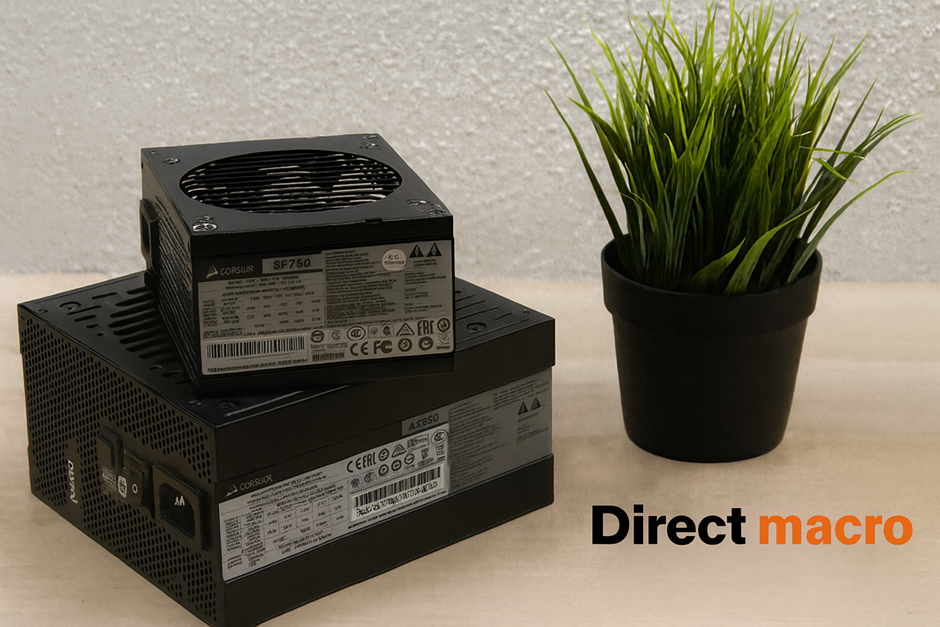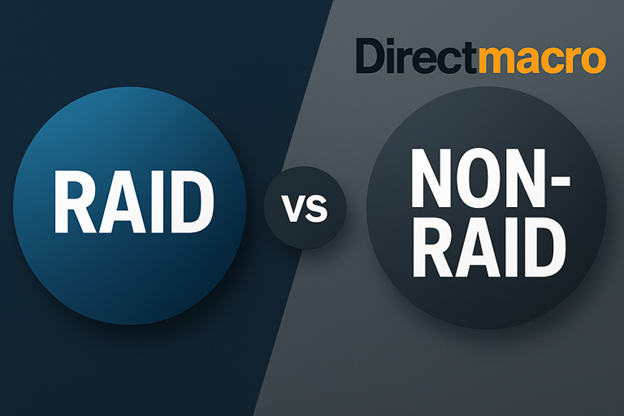What is a Power Supply? Function, Operation, and Types Explained
What is a Power Supply?
The power supply is an important but frequently underestimated component for anyone who uses electronics, from a simple smartphone charger to a large data center. What is a power supply in its most basic definition? It is an electrical device that delivers power to a load. A power supply converts an electrical current from a source, such as a wall outlet or battery, into the necessary voltage, current, and frequency to safely and efficiently power a device. Raw and incompatible power would instantly harm delicate electronic components without this crucial conversion and regulation.
This critical conversion procedure is required for practically all electrical equipment, including computers and medical devices. A computer’s PSU (power supply unit) is tailored to satisfy the power requirements of its numerous components.
How Does a Power Supply Work? A Step-by-Step Guide
The conversion of raw electrical energy into a clean and usable form is a multi-step process. Whether it is a simple wall adapter or a complicated industrial unit, the fundamental principles of power supply operation remain consistent. This tutorial explains the common actions about how a power supply works. How it protects and powers your devices.
Step 1: Transformation
The transformer is often the first power supply component to receive incoming alternating current (AC). Its purpose is to convert the high voltage from the wall socket, such as 120V or 230V AC, to a more manageable AC voltage level. The transformer also provides electrical isolation to protect the gadget from the high-voltage mains.
Step 2: Rectification
Next, the lower-voltage AC enters the rectifier stage. This circuit, which is usually a diode bridge, converts the alternating current into a pulsating form of direct current (DC). Since diodes only allow current to flow in one direction, they effectively flip the negative half of the AC waveform to create a series of positive voltage pulses.
Step 3: Filtering (Smoothing)
Most electronics cannot handle the rectifier’s pulsing DC. The filtering stage employs massive capacitors to calm these pulsations. These capacitors charge up at voltage peaks and discharge when the voltage drops, filling in the gaps and producing a considerably smoother DC voltage with significantly less ripple.
Step 4: Regulation
Voltage regulation is a crucial aspect of understanding how a power supply works. The filtered DC may still fluctuate due to changes in input power or load. The regulator keeps the output voltage constant and stable at the required level, shielding sensitive electronic components from harmful fluctuations.
Regulated vs Unregulated Power Supply: What’s the Difference?
The presence or absence of a voltage regulator distinguishes a major class of power supplies. Understanding this distinction is critical for determining the appropriate type of power for a given application.
1. Unregulated Power Supply
An unregulated power supply is the most basic and inexpensive type. It usually only consists of a transformer, rectifier, and filter. The output voltage is unregulated and can vary greatly depending on the load current and input voltage.
- Best For: Simple applications do not require a precise, stable output voltage, such as charging a lead-acid battery or powering a simple incandescent light bulb.
- Limitation: The voltage will decrease as the current draw increases, rendering it unsuitable for sensitive electronics.
2. Regulated Power Supply
A regulated power supply incorporates a voltage regulator circuit into the design. It ensures a constant and stable output voltage regardless of input voltage or load variations. It is the standard for modern electronics.
- Best For: All electronics that require a consistent and clean power supply, such as computers, audio equipment, and sensitive laboratory instruments.
- Function: It keeps the voltage level constant and precise by continuously monitoring the output and adjusting the circuit.
Comparison Table: Regulated vs. Unregulated Power Supply
| Feature | Regulated Power Supply | Unregulated Power Supply |
| Output Voltage | Constant and stable | Variable; fluctuates with input and load |
| Circuit Complexity | More complex; includes a regulator | Simpler: basic transformer, rectifier, filter |
| Cost | Higher due to added components | Lower due to simpler design |
| Efficiency | Can vary; linear types are less efficient | Often less efficient under varying loads |
| Best For | Sensitive electronics, computers, audio equipment | Simple loads like heaters or bulbs |
Linear vs Switching Power Supply: A Core Technology Choice
Power supplies are defined not only by whether they are regulated or unregulated but also by their core operating technology. The two most common architectures are linear and switching, both with their own set of trade-offs.
1. Linear Power Supply
The traditional approach is to use a linear power supply, which consists of a transformer, rectifier, filter, and a linear regulator that converts excess voltage to heat.
- Pros: Ideal for applications that require low noise and ripple, such as high-fidelity audio equipment or sensitive scientific instruments.
- Cons: Inefficient due to heat dissipation, larger and heavier than switching units, and potentially expensive.
2. Switching Power Supply (SMPS)
A switching power supply, or Switched-Mode Power Supply (SMPS), is a more modern design that uses high-frequency switching to achieve voltage regulation with a small transformer.
- Pros: Extremely efficient, compact, and light. This is the most common technology used in today’s consumer electronics.
- Cons: Because of its high-frequency switching, it can cause electrical noise (ripple), though modern designs have significantly reduced this problem.
Comparison Table: Linear vs. Switching Power Supply
| Feature | Linear Power Supply | Switching Power Supply |
| Efficiency | Low; dissipates excess power as heat | High; uses high-frequency switching |
| Size & Weight | Larger and heavier | Compact and lightweight |
| Cost | Generally, more expensive | Less expensive for higher power outputs |
| Noise | Very low electrical noise/ripple | Can generate noise, though well-controlled in modern units |
| Applications | High-end audio, test equipment | Computers, phones, consumer electronics |
Other Important Power Supply Types
In addition to linear and switching designs, there are specialized power supply types for specific applications. Let’s discuss these types:
1. DC-DC Power Supply
A DC-DC power supply is essential for many electronic systems, including mobile devices, electric vehicles, and solar power installations. Its sole function is to convert a DC source voltage into another DC output voltage. For example, it can boost a battery’s voltage to power a specific circuit or reduce it to a lower and more stable voltage for another component. This type of conversion is critical for optimizing power usage and ensuring that each part of a system receives the precise voltage it requires and contributes to overall efficiency and performance.
2. Programmable Power Supply
A programmable power supply is a sophisticated electronic load device where the output is controlled via an analog input or digital communication interface. This allows for precise, automated control over voltage, current, and even frequency.
- Best For: Laboratory testing, automated production line testing, and research and development require consistent power characteristics.
3. Uninterruptible Power Supply (UPS)
An uninterruptible power supply (UPS) provides backup power when the primary power source fails. It typically uses internal batteries and receives power from the AC mains while simultaneously charging the batteries.
- Best For: Protecting critical equipment, such as computers and servers, from power outages and fluctuations.
4. High-Voltage Power Supply
A high-voltage power supply can deliver hundreds or thousands of volts, which is far more than most standard electronics require.
- Best For: Specialized applications include X-ray machines, electron microscopes, and high-energy physics experiments.
Direct Macro – Our Top-Selling Power Supply Units
1. HP /0950-4173 AC Power Supply
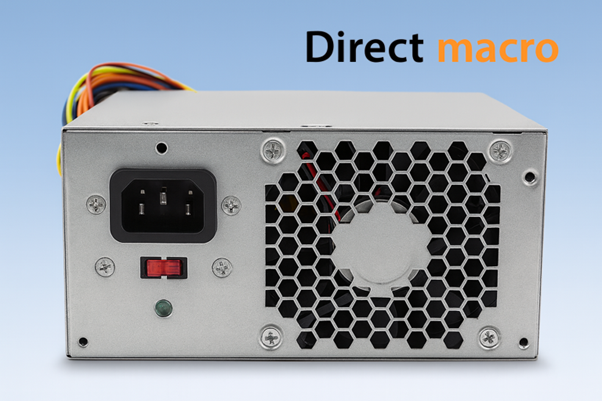
The HP 0950-4173 power supply unit is a durable and high-quality OEM replacement solution that is frequently used to restore specific HP equipment or in systems that require a dependable and compact power source. It is built to the precise dimensions and form factors of its original host system, ensuring smooth integration and factory-level performance. This device is the go-to option for keeping older and critical HP hardware without sacrificing stability or component compatibility.
Specifications
- Specific OEM Part Number: 0950-4173.
- Form Factor: Non-standard or proprietary small form factor (SFF) intended for specific HP desktop/workstation models.
- Wattage: Typically, low to mid-range (e.g., 200W – 300W), focused on stability over raw power.
- Connectors: HP motherboard and peripheral connectors are proprietary (non-HP users may need to utilize adapters).
- Voltage: Single or dual +12V rail design, optimized for efficiency in its target system.
Reasons to Buy
- Perfect OEM Match: Guarantees fit and compatibility for specified HP systems.
- Reliability: Built with commercial-grade components for long-term, stable operation.
- Restoration: Essential for bringing legacy HP hardware back to full working order.
Reasons to Avoid
- Proprietary Connectors: Nearly impossible to use in a standard ATX PC build without modification.
- Low Wattage: Insufficient power for modern graphics cards or high-end CPUs.
- Availability: May be difficult to source as a brand-new unit; often sold as refurbished or pull-outs.
2. IBM Power Supply for 8530 / 286 55 SX
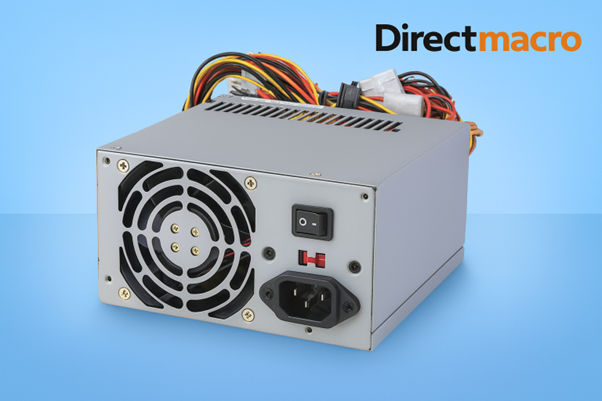
This IBM Power Supply is a true piece of computing history. It is essential for collectors and restorers working on antique IBM Personal System/2 (PS/2) models such as the 8530 and 286 55 SX. This unit exemplifies late 1980s engineering, meeting the low-wattage, dedicated power requirements for these classic Micro Channel Architecture (MCA) systems. Acquiring this device assures that these old computers operate authentically and reliably.
Specifications
- Wattage: Extremely low (e.g., 60W – 100W), sufficient for vintage logic boards and drives.
- Form Factor: Highly specific, non-standard IBM PS/2 housing.
- Compatibility: Designed exclusively for IBM PS/2 models 8530, 286 55 SX, and similar PS/2 systems.
- Connectors: Custom connectors specific to the PS/2 motherboard and internal components.
Reasons to Buy
- Vintage Restoration: A required component for the authentic and reliable operation of classic IBM PS/2 systems.
- Collector’s Item: High value for computing history enthusiasts and museum exhibits.
- Original Quality: Built to the exacting standards of late 80s/early 90s IBM hardware.
Reasons to Avoid
- Zero Modern Compatibility: Completely unusable with any standard modern components.
- High Scarcity: Price reflects its rarity rather than its performance specifications.
- Service Life: Electrolytic capacitors may require replacement due to age (recap needed).
3. Empower Power Supply 1600W EPS ATX12V MINING POWER SUPPLY
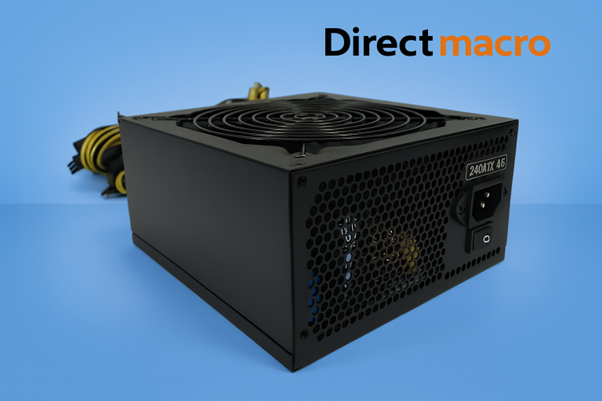
The Empower 1600W Mining Power Supply is a heavy-duty workhorse designed to withstand the constant demands of a cryptocurrency mining operation. Engineered for optimal power density and operating efficiency under continuous and high-load situations. It delivers a reliable and constant power delivery that is critical for running numerous high-power graphics cards for 24 hours a day and seven days a week. This power supply unit provides the wide range of connections and robustness that is required to serve as the foundation of any large-scale mining operation.
Specifications
- Wattage: Massive 1600W continuous output.
- Form Factor: Standard ATX (often extended length)/EPS ATX12V compatibility.
- Connectors: High quantity of PCIe 6+2 pin connectors (e.g., 10 or 12), optimized for multi-GPU setups.
- Efficiency: Typically, 80 PLUS Gold or Platinum rated, designed to lower energy costs in nonstop use.
- Cooling: High-speed, high-airflow fan (often loud) for superior thermal management.
Reasons to Buy
- Extreme Power Delivery: Easily supports 5+ graphics cards simultaneously.
- Optimized for Load: Designed for efficiency and stability under high, constant load, typical of mining.
- Cost-Effective Power: Excellent dollar-per-watt value for specialized applications.
Reasons to Avoid
- Noise Level: Fans are generally loud due to high-power cooling requirements.
- Overkill for Gaming: Far more power than a typical single- or dual-GPU gaming PC requires.
- Physical Size: May not fit in standard, compact PC cases.
4. XPG Power Supply FUSION 1600 TITANIUM POWER SUPPLY
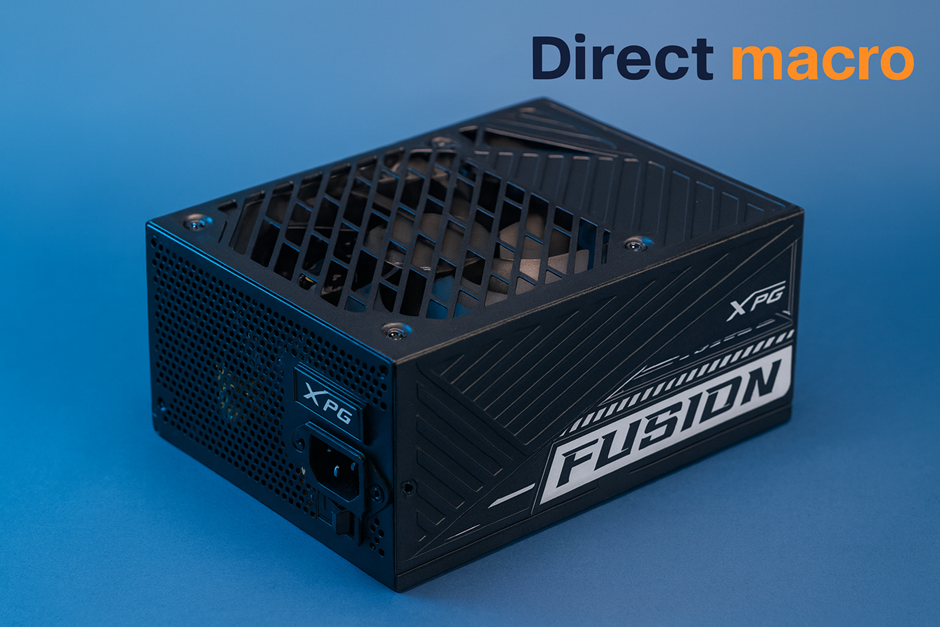
The XPG Fusion 1600 Titanium is the pinnacle of consumer-grade power supply technology. It provides an impressive 1600 watts of power while maintaining an industry-leading 80 PLUS Titanium efficiency rating. This unit is designed for the uncompromising enthusiast, high-end workstation builder, or extreme overclocker who expects flawless power quality, low energy waste, and silent operation. The Fusion 1600 is a long-term investment in stability and dependability with its fully modular design and premium components.
Specifications
- Wattage: 1600W Ultra High Power.
- Efficiency Rating: 80 PLUS Titanium (94%+ efficiency at 50% load).
- Modularity: Fully modular design for clean cable management.
- Rails: Single, robust +12V rail for maximizing power availability to GPUs and CPU.
- Features: Digital control for extremely tight voltage regulation (low ripple/noise).
Reasons to Buy
- Top-Tier Efficiency: Achieves the lowest operating costs and heat generation possible.
- Superior Power Quality: Delivers exceptionally clean and stable power, crucial for overclocking and sensitive hardware.
- Silent Operation: Often features hybrid fan modes, allowing for zero fan spin under low/moderate load.
Reasons to Avoid
- Premium Price: Commands a significant price tag due to the titanium rating and high wattage.
- Physical Size: Larger and heavier than standard PSUs due to high-quality components and robust cooling systems.
- Unnecessary Capacity: 1600W is overkill for 99% of all PC builds.
5. Super Micro 1620W Redundant AC Power Supply
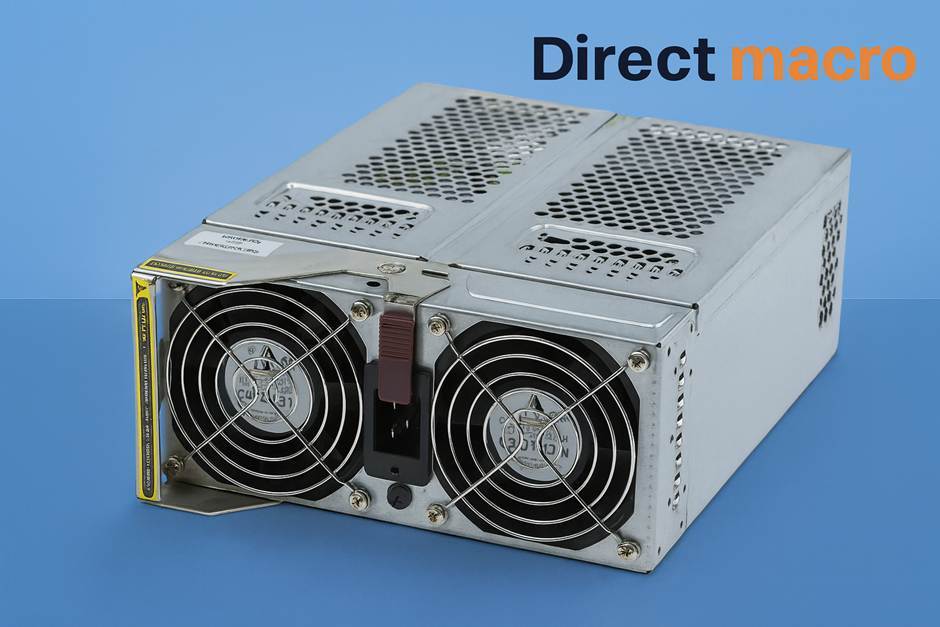
The Super Micro 1620W Redundant Power Supply is the ideal choice for mission-critical data centers and enterprise applications that cannot afford downtime. This unit is designed to work in a redundant configuration (N+1 or 1+1), allowing one module to immediately take over the full load if the other fails. Maintenance can be performed without powering down the server thanks to its hot-swappable capability, making it the epitome of high availability and enterprise-grade resilience.
Specifications
- Wattage: 1620W per module (operating in parallel).
- Redundancy: Supports a 1+1 or N+1 configuration for high availability.
- Form Factor: Standard server/rackmount form factor (e.g., 2U or 3U).
- Feature: Hot-swappable, allowing replacement without system shutdown.
- Power Distribution: Connects to a proprietary backplane for synchronized power delivery.
Reasons to Buy
- Zero Downtime: Ensures continuous operation is critical for servers and data storage.
- Instant Failover: Automatic switchover to the redundant module upon primary failure.
- Enterprise Reliability: Built for 24/7 and 365-day operation under constant load in harsh data center environments.
Reasons to Avoid
- Loud: Designed for airflow, not silence; noise levels are high (not suitable for home use).
- High Cost: Requires purchasing two modules (plus the power distribution backplane) for redundancy.
- Non-Standard Connectors: Only compatible with Super Micro server chassis that support the corresponding backplane.
What a Power Supply Does: A Summary of Functions
To understand what a power supply is, consider its core functions. The primary function of a power supply is to provide reliable and usable electricity to an electronic load. This process consists of several key actions:
- Conversion: Transforming incoming electrical energy (often AC) into the specific type required by the device (usually DC).
- Regulation: Stabilizing the output voltage to a consistent level, protecting sensitive components from power fluctuations.
- Distribution: Supplying the correct power to different components, such as a computer’s motherboard, CPU, and peripherals.
- Protection: Incorporating built-in safeguards, such as overload protection, to prevent damage from power surges, short circuits, or excessive current draw.
Final Thoughts
The evolution of the PUS (power supply unit) from a bulky, inefficient component to a compact, highly efficient device demonstrates the advancements in electronics. Modern switched-mode designs dominate the market because of their superior efficiency, but traditional linear versions continue to play an important role in niche applications where low noise is critical.
Anyone can make an informed decision based on their specific needs by understanding the differences between regulated vs unregulated power supply and linear vs switching power supply. From the initial voltage transformation to the final stage of regulation, every component of a power supply is designed to provide a clean, dependable stream of energy that makes it an essential component of our interconnected world.
If you are still unsure which power supply is best for your needs, contact our expert team at (855) 483-7810 or visit our website to request a bulk quote.
FAQs
- What is a power supply in a computer?
A computer’s power supply, or PSU (power supply unit), is a metal box that converts high-voltage AC from a wall outlet into low-voltage DC power for the computer’s internal components, such as the motherboard, CPU, and storage drives. - What is in a power supply?
A typical power supply contains a transformer to adjust voltage, a rectifier to convert AC to DC, capacitors for filtering and smoothing, and a regulator for stabilizing the output voltage. - What is an example of a power supply?
Examples include a desktop computer’s internal power supply, a laptop’s AC adapter, a simple wall adapter for charging a phone, and a laboratory power supply used to test electronics. - What is a power supply and what is its function?
A power supply is an electrical device that converts electric current from a source into a usable format for an electrical load. Its function is to convert, regulate, and distribute power, while also protecting sensitive components from voltage fluctuations and surges.
Do you need advice on buying or selling hardware? Fill out the form and we will return.

Sales & Support
(855) 483-7810
We respond within 48 hours on all weekdays
Opening hours
Monday to thursday: 08.30-16.30
Friday: 08.30-15.30



